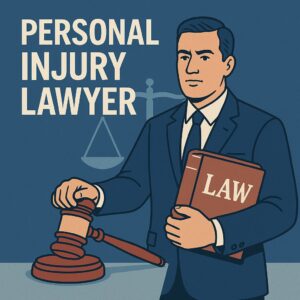If you’re questioning whether filing a personal injury claim is worthwhile, considering the time, effort, and mental toll, this article is for you. You might be hoping life will return to normal, or unsure what a claim would even cover. Before you decide, you deserve to know what kinds of compensation are available if you choose to take that step. This article breaks it down so you can see where this path might lead and decide whether to walk it on your own terms.
The Main Categories of Compensation
“The legal system can’t undo what happened, but it can put real tools in your hands, including funds for treatment, time to heal, support when it feels like no one’s listening, ” says personal injury attorney Rob Usry of Holland & Usry, P.A.
When your life’s been upended by an accident, what you need most is a way to feel steady again. That’s what compensation is meant to do: give you the means to restore your routine, recover what’s been lost, and reclaim a sense of control. Whether the harm came from someone’s carelessness or outright disregard, the legal system offers you a way to hold them accountable. So, what can you actually recover? Let’s break it down.
- Economic damages
Let’s start with what you can see, touch, and tally up. Economic damages cover the costs that hit your wallet directly: hospital bills, time off work, a car that needs replacing, and every Uber ride to physical therapy that insurance didn’t cover. In South Carolina, there’s no cap on these damages, but you do need to document everything. That includes medical records, paychecks, receipts for things like medical devices, gas mileage, and expert projections for what future care or lost income might cost. The more detailed, the better.
- Non-economic damages
Not every loss leaves a receipt. Non-economic damages exist for the things you can’t tally in a spreadsheet. Things like physical pain, emotional distress, or the gut punch of not being able to enjoy the parts of your life that used to bring you joy. South Carolina law recognizes these losses, too. Whether it’s chronic pain, disfigurement, anxiety, or the quiet unraveling of a marriage under stress, these damages are meant to acknowledge the human cost of injury. And while most personal injury claims don’t have a cap, medical malpractice cases do: $350,000 per provider, and $1.05 million total if more than one is involved.The same holds true for suing government offices, like the police: in those cases, limits are $300,000 per occurrence and $600,000 for the whole incident, no matter how many people were hurt.
- Punitive damages
While most damages in a personal injury claim are meant to restore what you’ve lost, punitive damages are different. They’re rare. South Carolina law allows for them only when the other side has done something flagrant . We’re talking drunk driving, fraudulent coverups, or reckless conduct that shows no regard for your safety. You’ll need strong proof, and even then, the award is capped: usually three times your compensatory damages or $500,000, whichever is higher. But they’re powerful not just for your case, but for every case that comes after yours.
What Affects How Much You Can Actually Get?
Two people can go through similar accidents and walk away with very different outcomes, and a lot of that has to do with the details. How badly were you hurt? Will you ever fully recover? Are you able to work in the same capacity again? The law looks at all of that when determining what your case is worth. Courts consider how much treatment you’ll need, whether you can return to work, and how much the injury has altered your daily routine. The more life-changing the harm, the more compensation tends to follow.
Still, every case lives within certain constraints. South Carolina’s modified comparative fault system is arguably the most important. If you’re found to share part of the blame, your compensation is reduced by the proportion of liability. If you’re mostly at fault, you’re barred from recovery altogether. Then there’s the matter of what the other party can actually pay. You can prove millions in losses, but if the at-fault party only has $100,000 in coverage and no assets, the payout can only go so far.
Conclusion
By now, you understand what kinds of compensation are on the table, how they work, and what shapes your outcome. That’s essential because when you comprehend what the law allows, you’re in a better position to make smart decisions.
